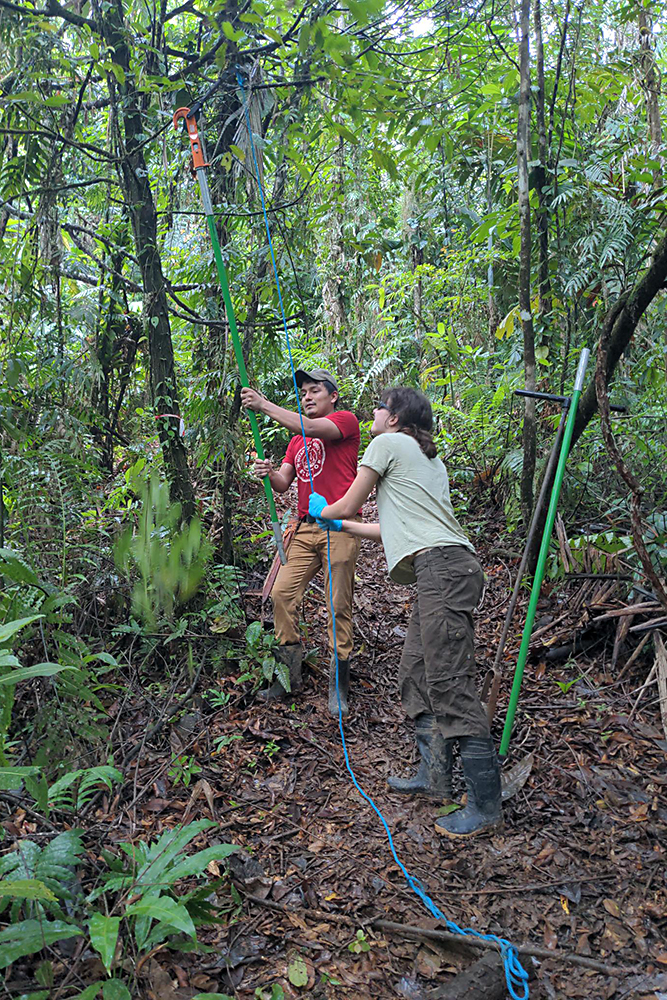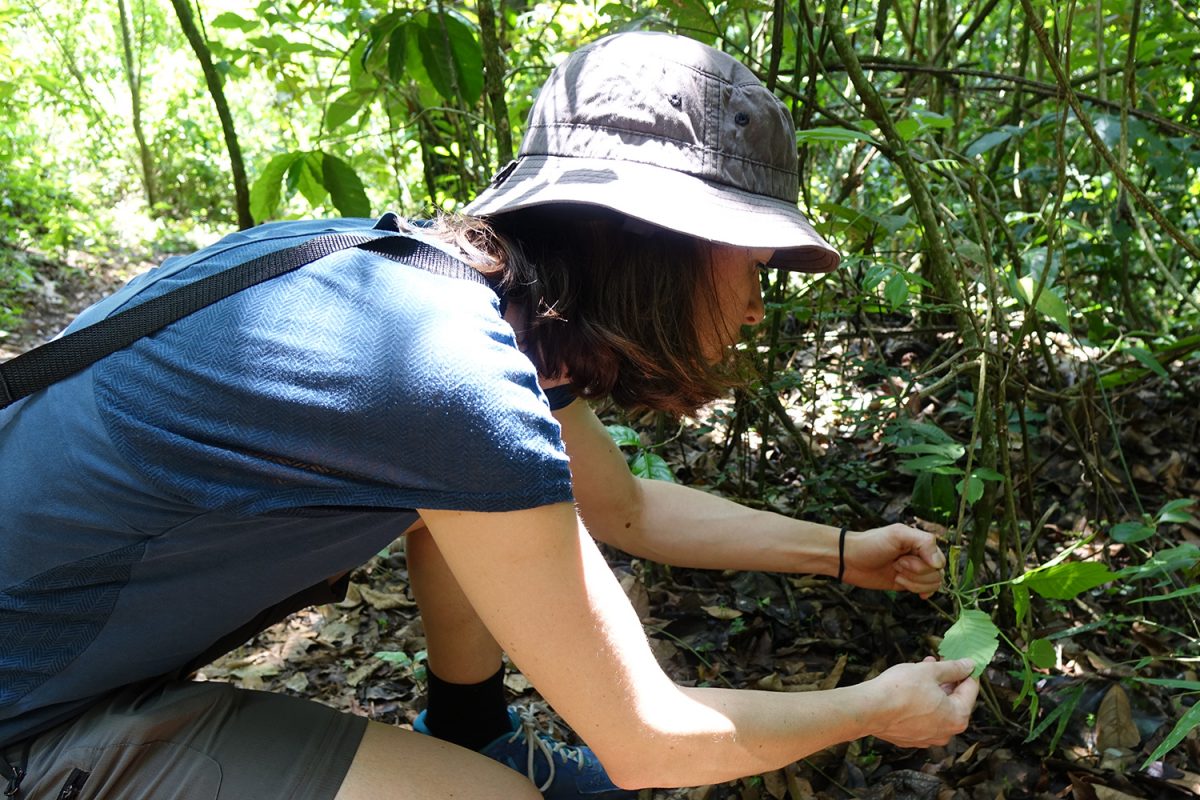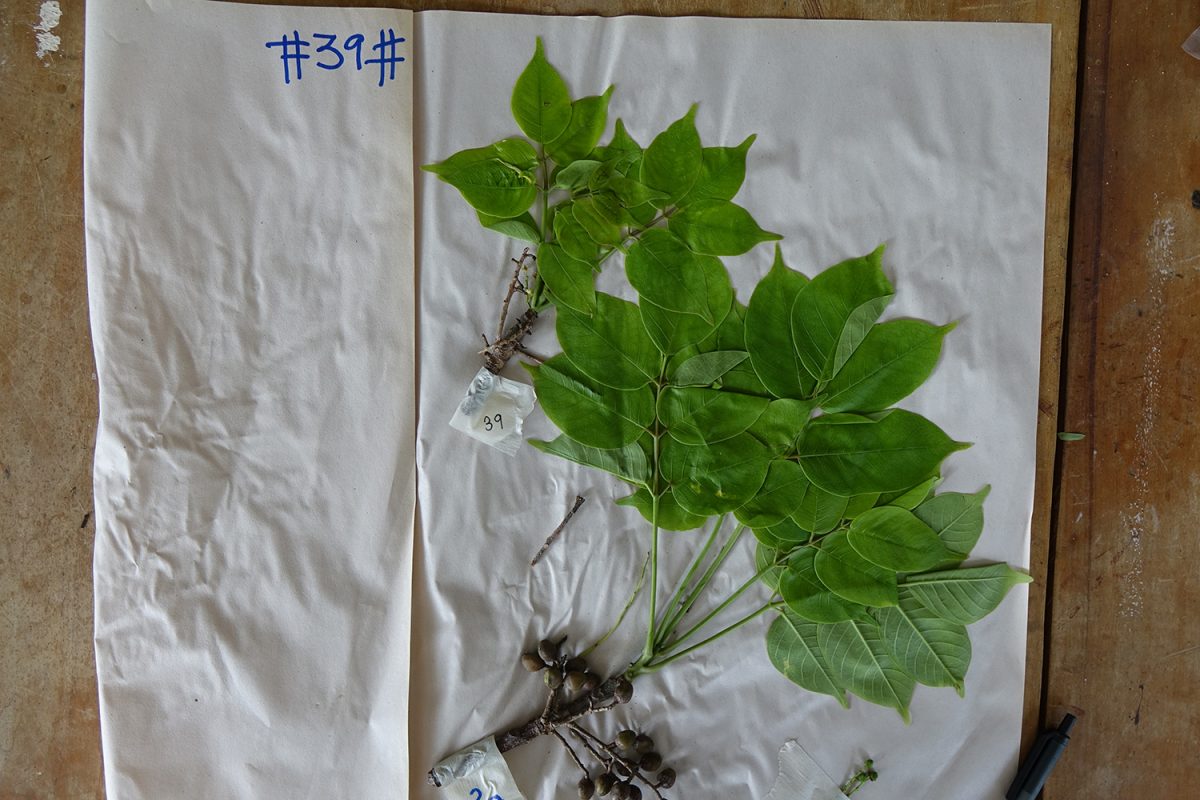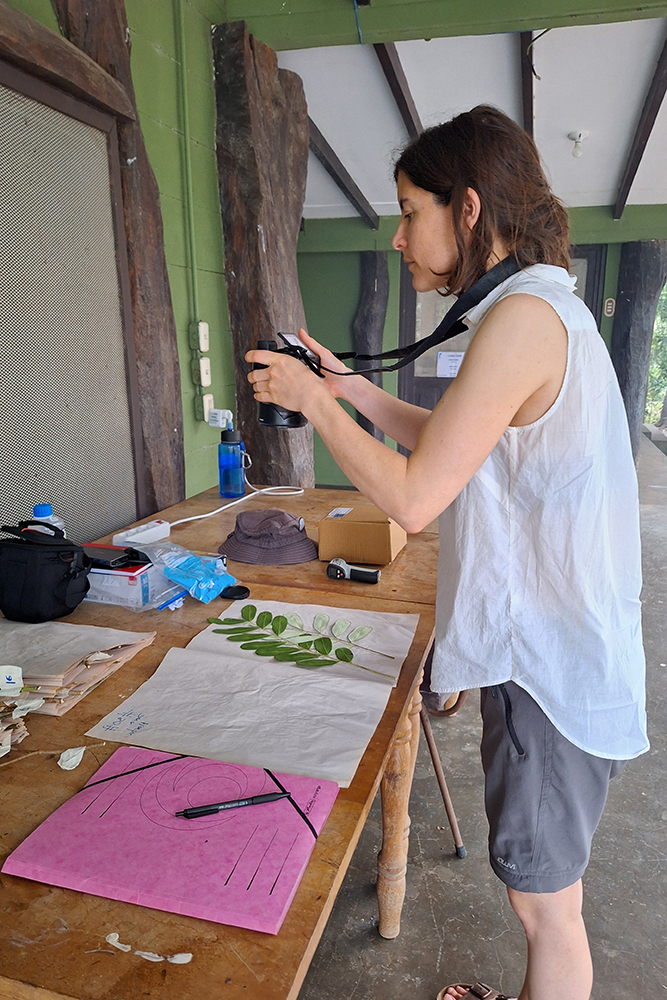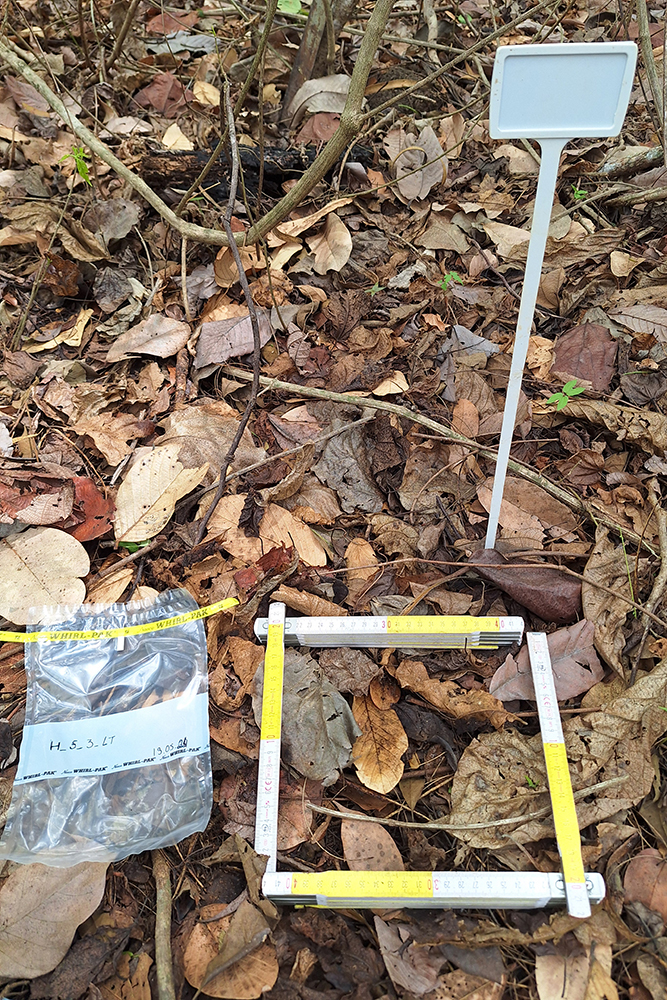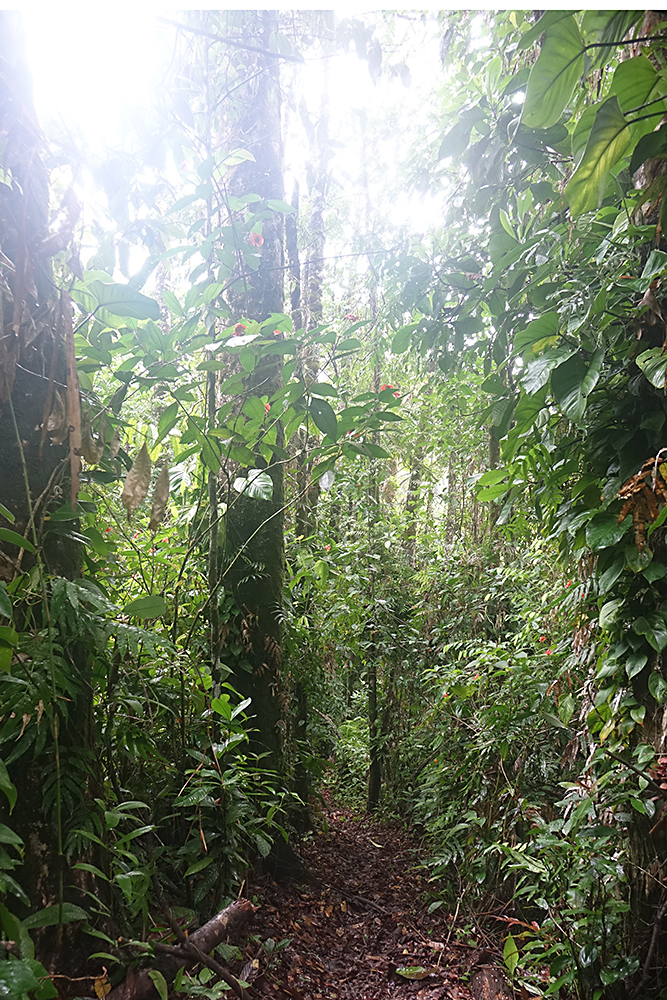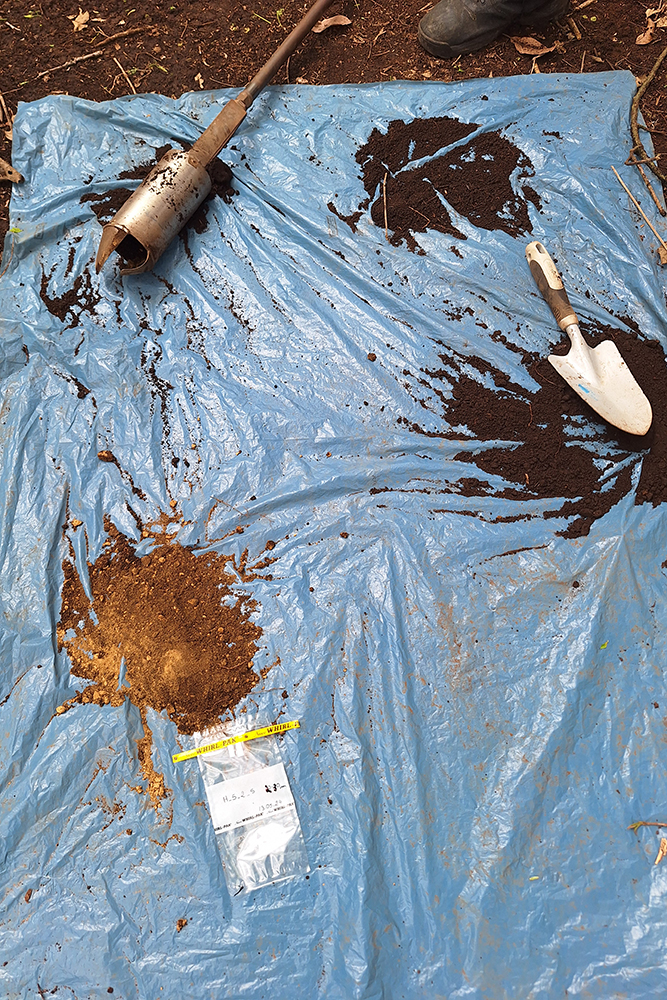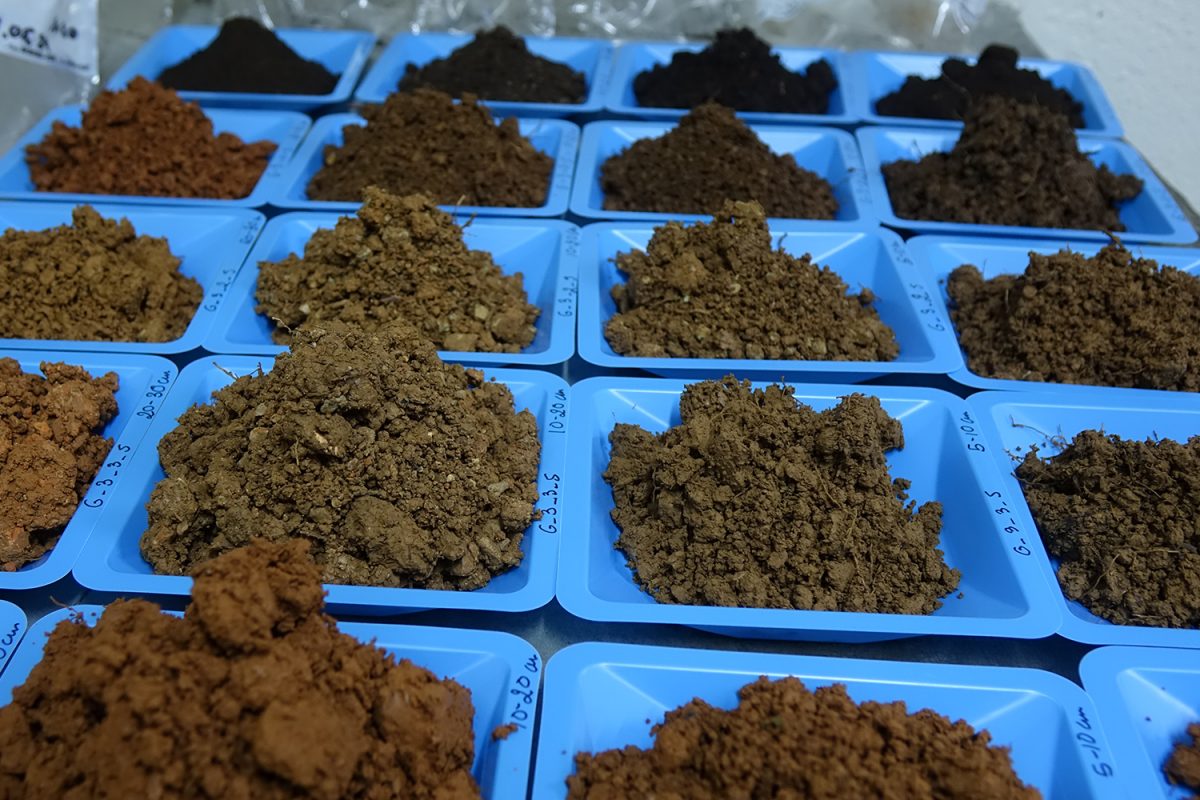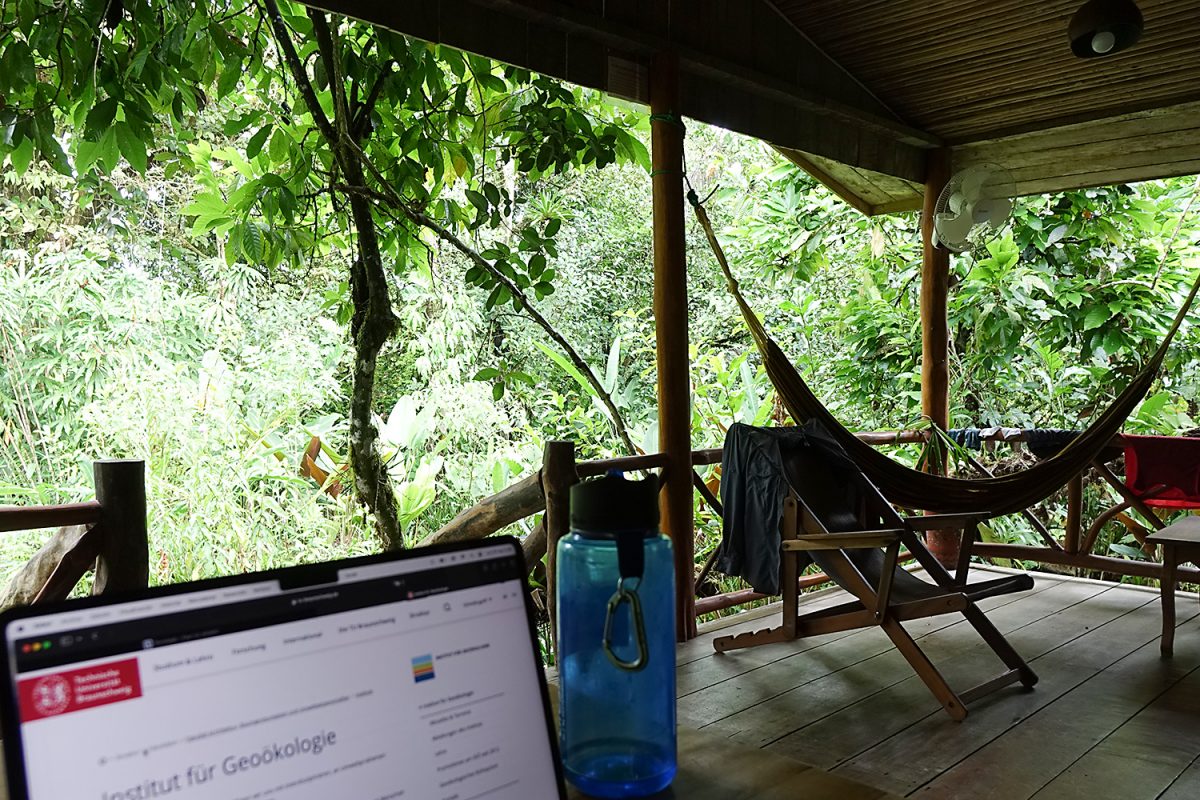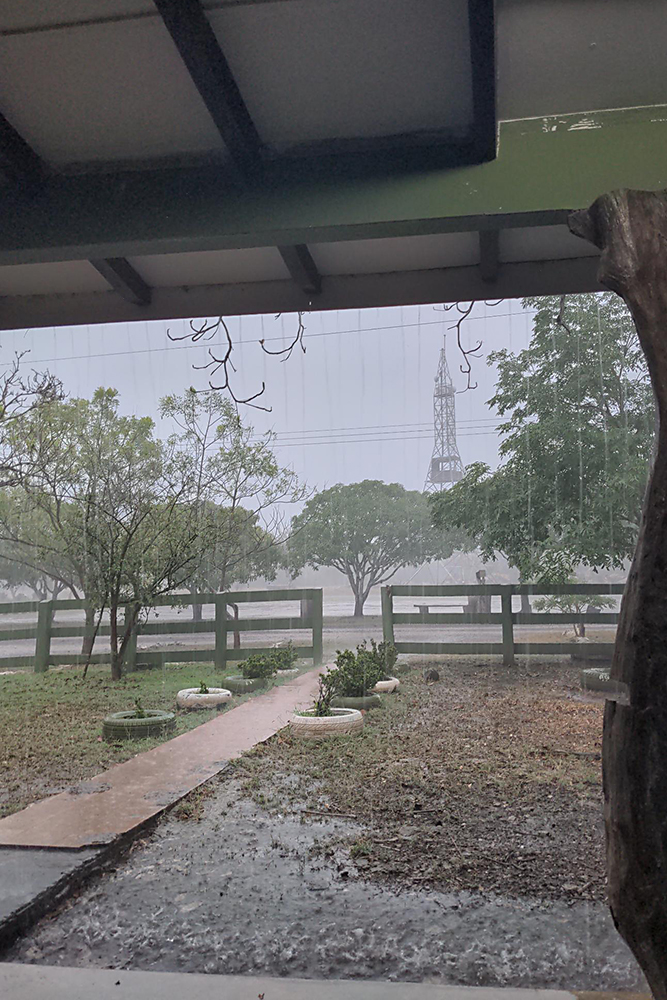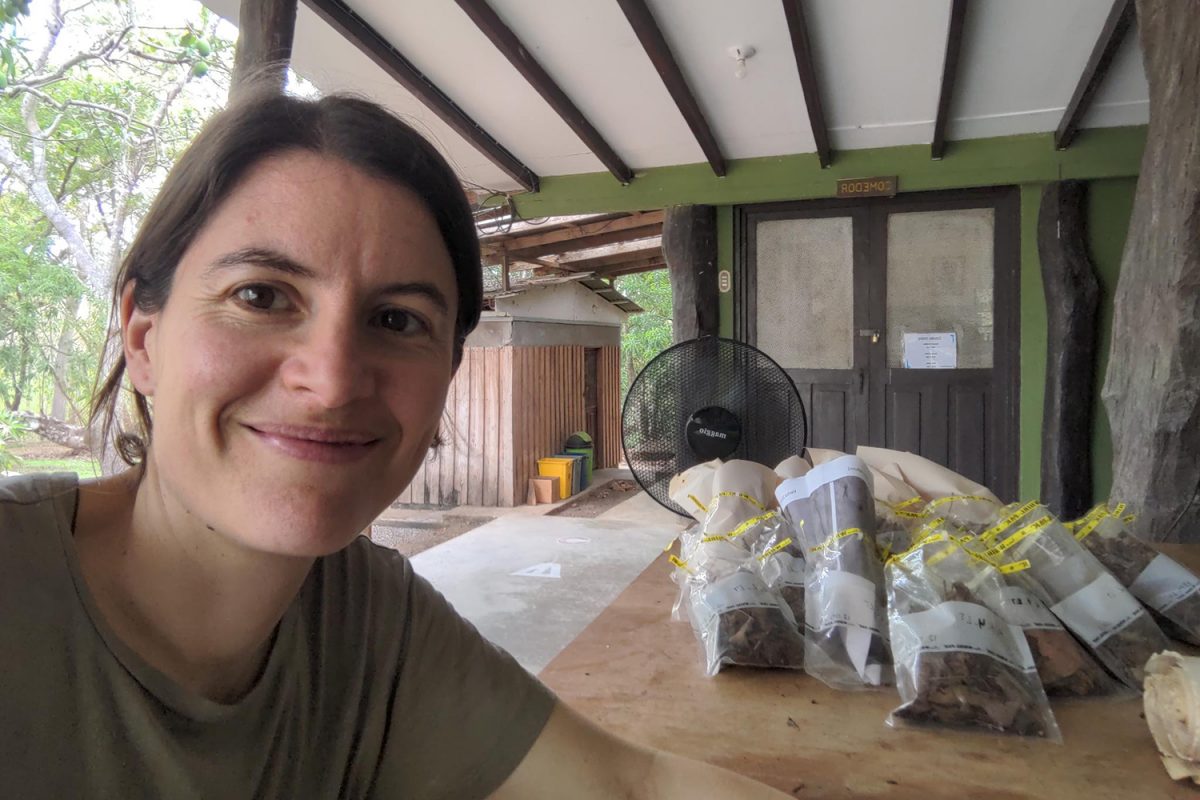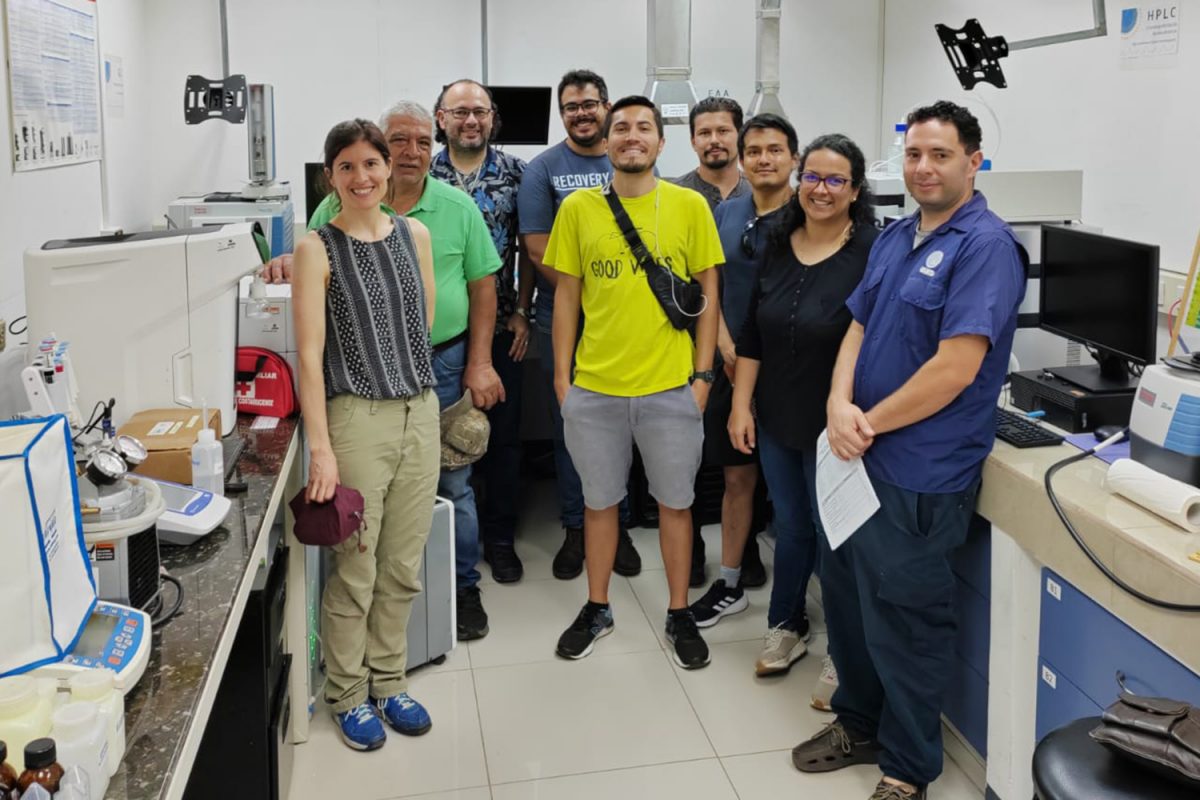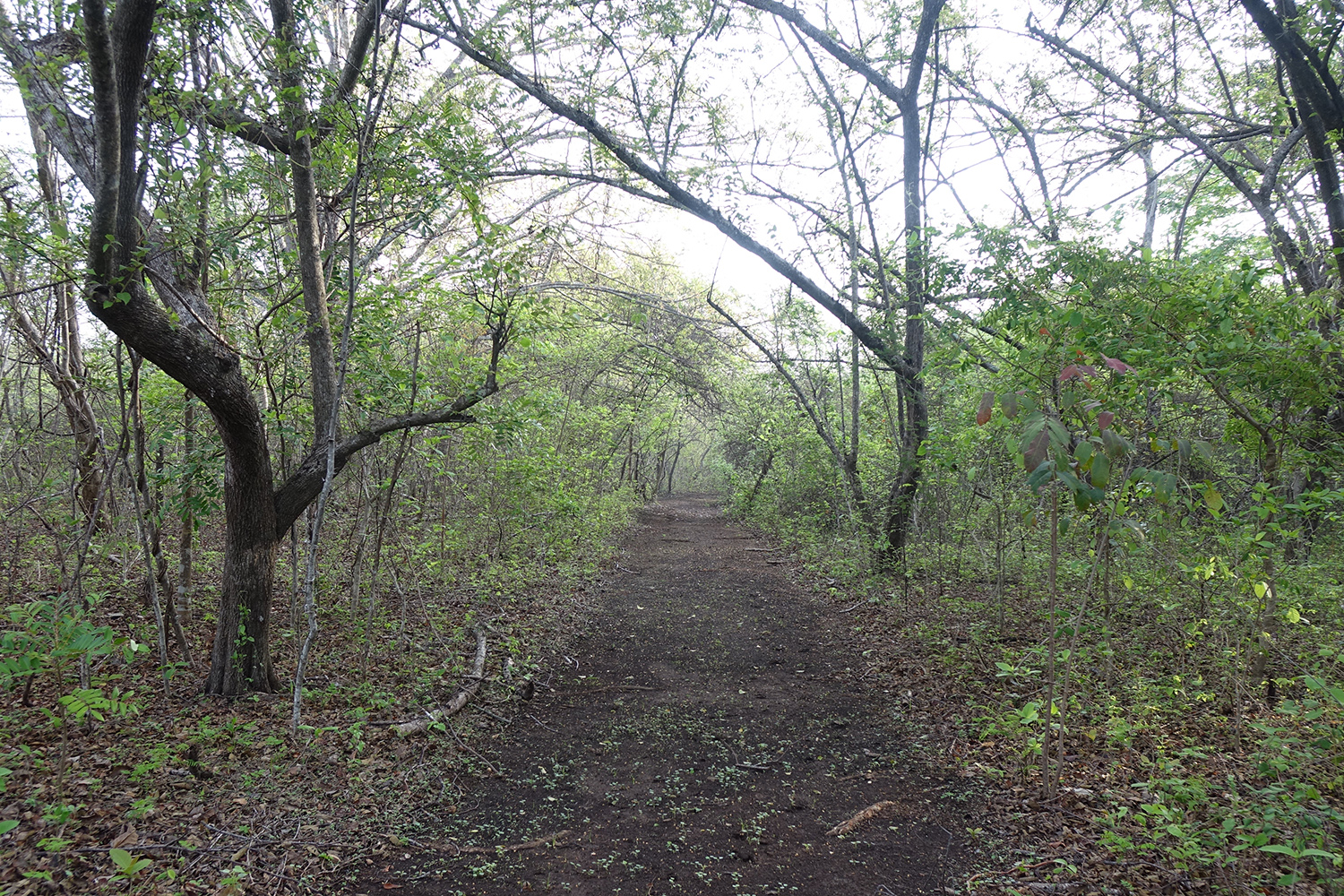The role of the forest in the mercury cycle Environmental scientists are investigating the path of the pollutant in Costa Rica
Every year, two to three thousand tonnes of mercury from industry are released into the atmosphere. Due to the long life of mercury in the atmosphere, it is distributed across the entire globe. The highly toxic trace metal, which can severely damage the health of organisms, circulates in a complex cycle between air, soil and water. This mercury cycle is the focus of research by Dr Marta Pérez-Rodríguez and Dr Juan Morales Arteaga from the Institute of Geoecology at the Technical University of Braunschweig. The environmental scientists are investigating the role played by tropical forests in the DFG-funded “FORVEST-Hg” project. Dr Marta Pérez Rodríguez will report on her research on 11 December in the “TU for Future” series entitled “From tropics to poles: understanding the mercury cycle under global change”.
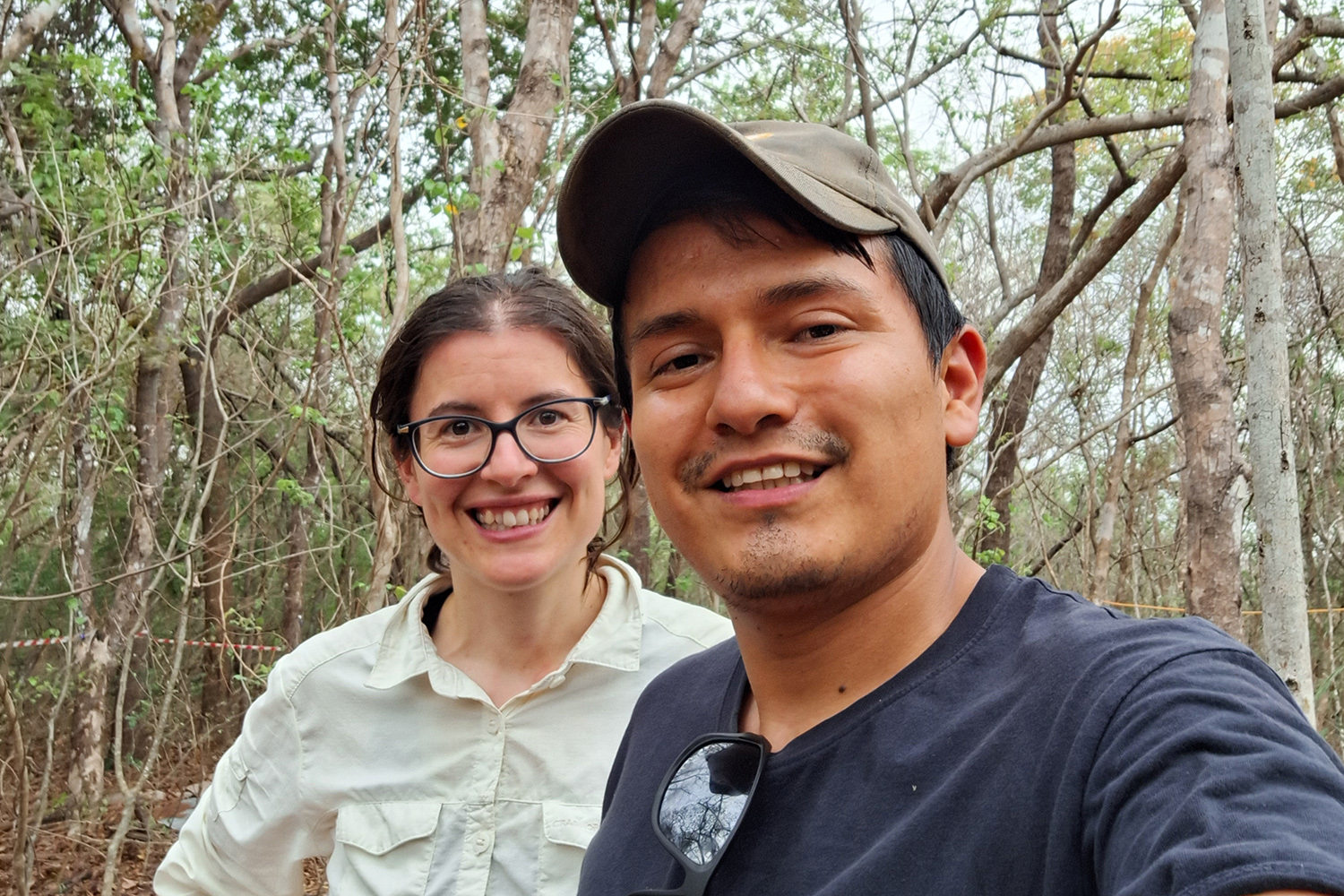
Marta Pérez Rodríguez and Juan F Morales Arteaga. Picture credits: Juan F Morales Arteaga/TU Braunschweig
Forests have a significant influence on the global mercury cycle, primarily because trees absorb mercury from the atmosphere during photosynthesis. The mercury concentration fluctuates depending on the season. Tropical forests are of particular importance in this context as they produce a considerable amount of biomass. In contrast to forests in temperate zones, there is no distinct autumn-winter dormancy phase in tropical forests, which leads to a more even biomass production in tropical forests. However, the available data on tropical forests is limited and mainly focusses on tropical rainforests.
Seasonal fluctuations in the mercury cycle
“Our project aims to close this knowledge gap by analysing different types of tropical forests, including tropical dry forests, which remain dry – with out precipitations– for almost half of the year. This will give us insights into the seasonal fluctuations in mercury accumulation,” explains Marta Pérez Rodríguez. “We are also looking at how periods of fluctuating precipitation in tropical rainforests affect the mercury cycle. And we want to analyse how differently mercury enters the soil via the leaf litter in the two types of forest.”
Rodríguez travelled to Costa Rica with her colleague Juan Morales Arteaga. During their fieldwork, they collected leaves, mulch and tree wood cores, among other things. They received support in collecting the samples and identifying the plant species from María A. Zúñiga Amador, J. Andrés Herra Araya and David Valverde Barquero from the Escuela de Ciencias Exactas y Naturales at the Universidad Estatal a Distancia of Costa Rica and Dr. Werner Huber from the University of Vienna. “The aim of our study is to quantify the role of vegetation as a sink for atmospheric mercury and to understand how vegetation facilitates the transfer of mercury from the atmosphere to the soil.”
Mercury concentration increases in the food chain
As a natural trace element, mercury occurs in very small quantities in the environment. However, despite its low concentration, it can be highly toxic, especially in its chemical form as methylmercury. This biologically active, toxic form accumulates in the tissue of organisms faster than it can be excreted. As smaller organisms are eaten by larger predators, the concentration of the pollutant increases with each stage of the food chain – a process known as biomagnification. This also leads to increased mercury concentrations in humans who consume fish and seafood, for example.
“Mercury is also a very mobile element,” says Marta Pérez Rodríguez. “Unlike most metals, mercury is liquid at room temperature and can also exist in a gaseous state, so it can travel long distances in the atmosphere from its source, change between different chemical forms and move through different environments. This contributes to its persistence over long periods of time in ecosystems and its widespread distribution.”
In the Department of Environmental Geochemistry at the Institute of Geoecology, researchers led by Professor Harald Biester are investigating which processes take place in different ecosystems, what connections exist between them and how environmental changes can alter or intensify these processes. Marta Pérez Rodríguez: “These findings can help to develop better regulations and control systems to reduce the impact of mercury pollution.”
From cocoa plants to rain trees
The sampling for their “FORVEST-Hg” project took Rodríguez and Arteaga to a seasonally dry tropical forest in the Estación de Investigación Forestal Horizontes in the Guanacaste region and to a rainforest near Piedras Blancas in the South Pacific part of Costa Rica. In total, they collected more than 100 leaf samples from around 60 different species representative of these forests – from cacao plants, lianas and ferns to majestic trees such as the rain tree (Samanea saman). To further explore the variability within the forest, some species were recorded multiple times in different areas of the same forest.
In addition to the leaves, the researchers also collected litterfall, i.e. dry leaves shed by the plants. “We want to use this data to characterise mercury uptake in different types of forest, assess the differences within the same forest and between different species and quantify the amount of mercury that is transported from the atmosphere to the soil via the leaf litter. To do this, we measure the mercury content in the litter,” explains Marta Pérez Rodríguez. The team has also sampled tree trunks, which will provide information about the mercury accumulated in the woody biomass. They have also taken soil samples to determine how much mercury gets into the soil.
Fieldwork under difficult conditions
The fieldwork in Costa Rica usually started very early. The scientists were already up at 4.45 am to take advantage of the cooler temperatures in the morning. As the day progressed, the heat and humidity increased, making the fieldwork increasingly strenuous. “Throughout the day, we drank more than four litres of water, supplemented by isotonic drinks and juices to maintain our fluid balance.”
In each forest, the researchers selected six sample areas that differed only slightly from one another in order to record the variability of the subzones within the forest. The expertise of the staff at the research stations was invaluable. As there are very tall trees in the tropical forests, sometimes over 50 metres high, it was a time-consuming task involving several people to reach the branches even at a height of eight metres.
After dark at 6 pm, special care was required to avoid snakes and other animals such as spiders, frogs and scorpions.
After their return from Costa Rica, the scientists in Braunschweig processed the collected samples and began the first analyses. This first of three planned sampling campaigns has already provided the research team with a valuable overview. Based on this data, they have refined and adapted the procedure for the next sampling, which is planned for November 2024 at the end of the rainy season, when the plants reach their highest biomass production.



